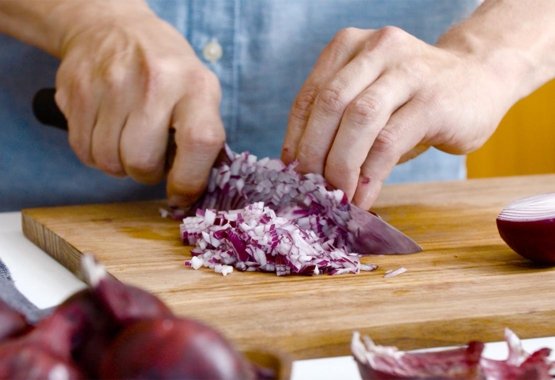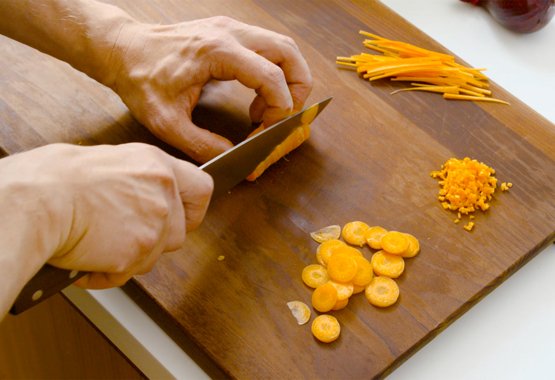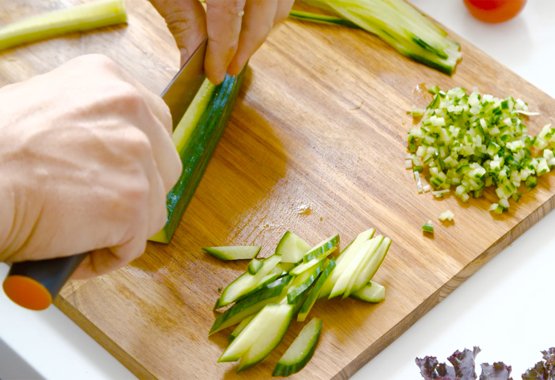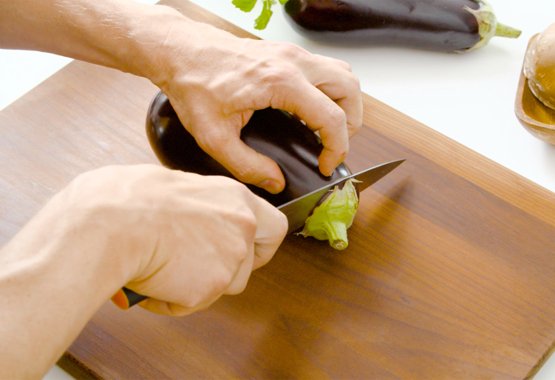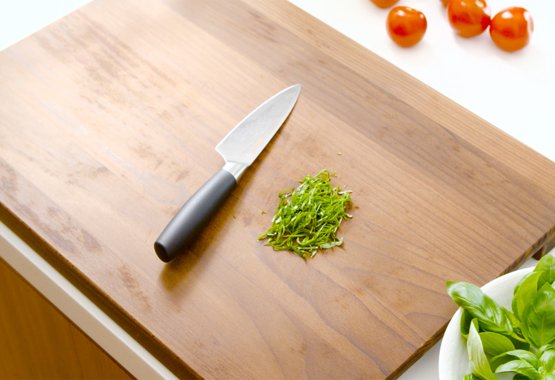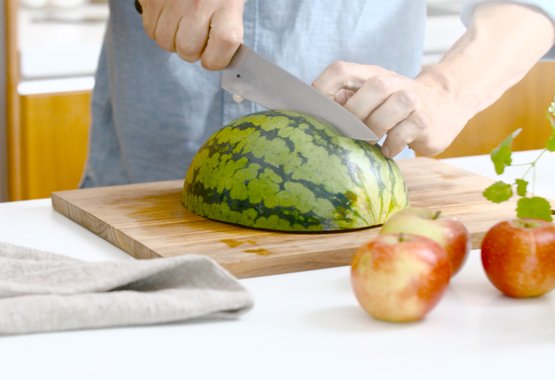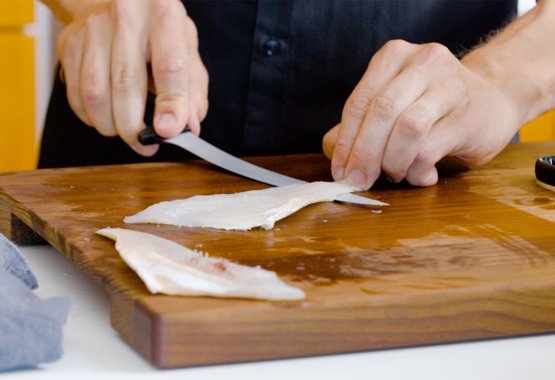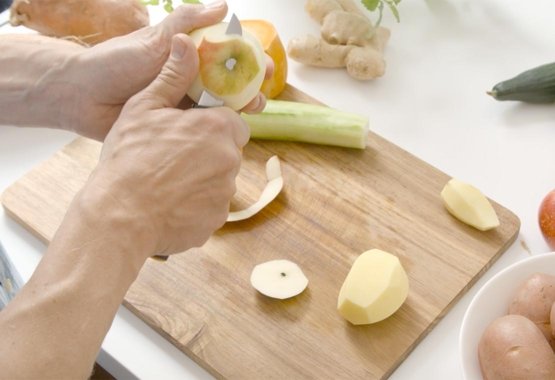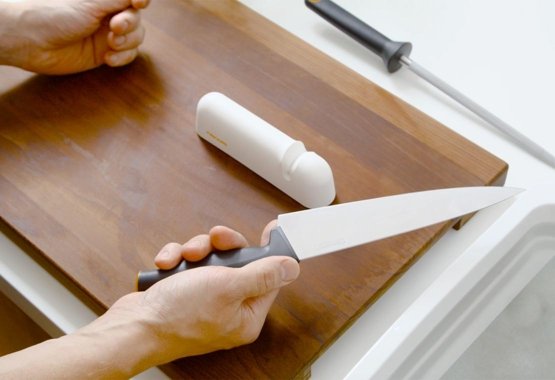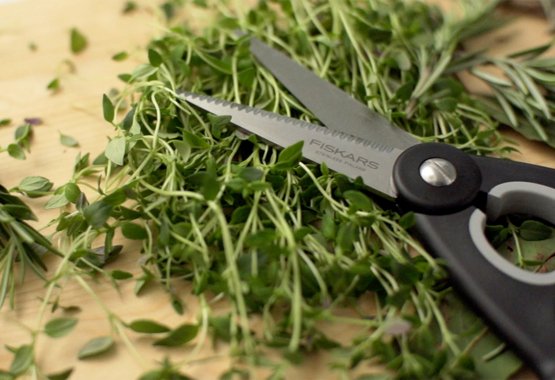
Cutting Academy
There’s a good reason why culinary school begins with lessons in knife skills. Mastering cutting techniques is an essential part of any cook’s repertoire in the same way as good knives are the basis of a well-equipped kitchen. It’s never too late to learn! Our Cutting Academy will teach you how to slice, dice and chop like a pro and choose the right knife for each task.
Cutting Academy
There’s a good reason why culinary school begins with lessons in knife skills. Mastering cutting techniques is an essential part of any cook’s repertoire in the same way as good knives are the basis of a well-equipped kitchen. It’s never too late to learn! Our Cutting Academy will teach you how to slice, dice and chop like a pro and choose the right knife for each task.
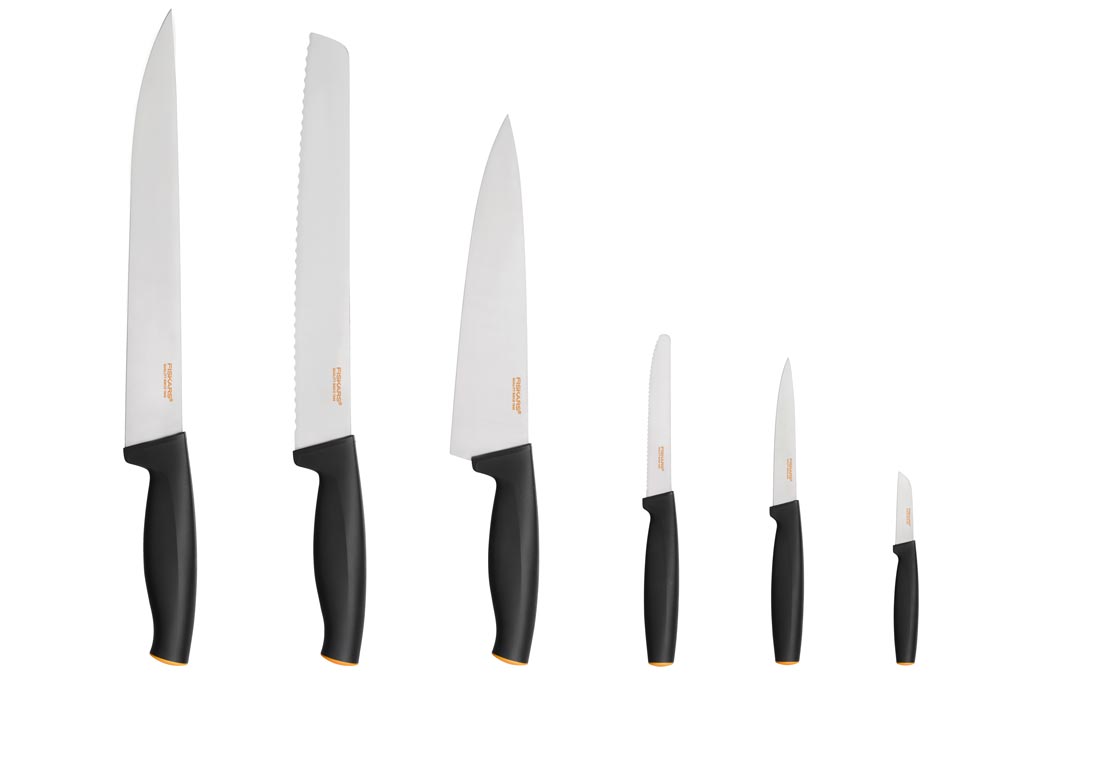
Blade guide
1. The carving knife's blade is slim with a pointed tip for carving roasts or slicing salami.
2. The bread knife slices cleanly through hard bread crusts thanks to its long and strong serrated blade.
3. The cook's knife is the quintessential knife of passionate chefs, with a broad blade and fine cutting edge for chopping, cutting and slicing meat and vegetables. Comes in several sizes.
4. The serrated blade of the tomato knife makes for easy cutting of tomatoes and other thin-skinned fruit and vegetables.
5. The paring knife is small with a slim blade for peeling, cutting and slicing fruit and vegetables.
6. The peeling knife is perfect for cleaning, peeling and cutting smaller fruit and vegetables.
Knife maintenance and storage
It’s important to sharpen your knives regularly. Fiskars tools for sharpening include a sharpening steel and the functional Fiskars Roll-Sharp sharpener, both of which can be used even for knives with serrated blades. See the video tutorial on this page for a demonstration of how they are used.
When stored in knife blocks or racks to protect the blades, your Fiskars knives will keep their sharpness even longer. Fiskars knife blocks and knife magnets provide convenient storing with a perfectly balanced look and feel.
Before storing your knives, it’s important to wash and dry them – ideally immediately after use. To wash knives in the dishwasher, make sure to use a blade protector.
For any more information about choosing and caring for your Fiskars knives, please ask at your local store, see the Cutlery product page on our website or contact Customer Care.
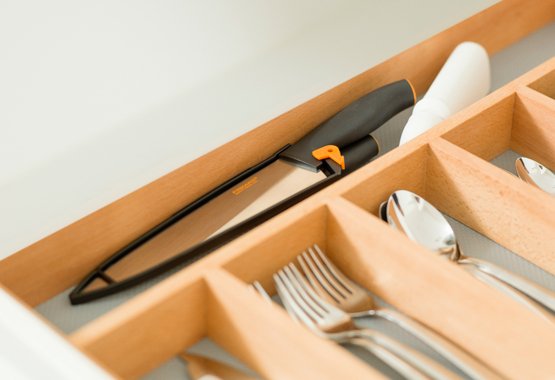
Kitchen scissors and shears
Sure, knives are great for many cutting tasks, but sometimes snipping is the way to go. Scissors are a convenient option for cutting herbs, snipping fish fins, cutting poultry, or whenever a cutting board feels unnecessary.
Just like knives, scissors come equipped with different types of blades. Non-serrated blades ensure high-precision cutting. Serrated blades help keep slippery ingredients and materials in place while cutting.
Take good care of your scissors to ensure an optimal performance. Wipe the blades after each use to keep them clean, and oil the pivot area once in a while to keep the cutting motion smooth. If the blades get dull, you can use a Fiskars Scissor Sharpener to sharpen them.
